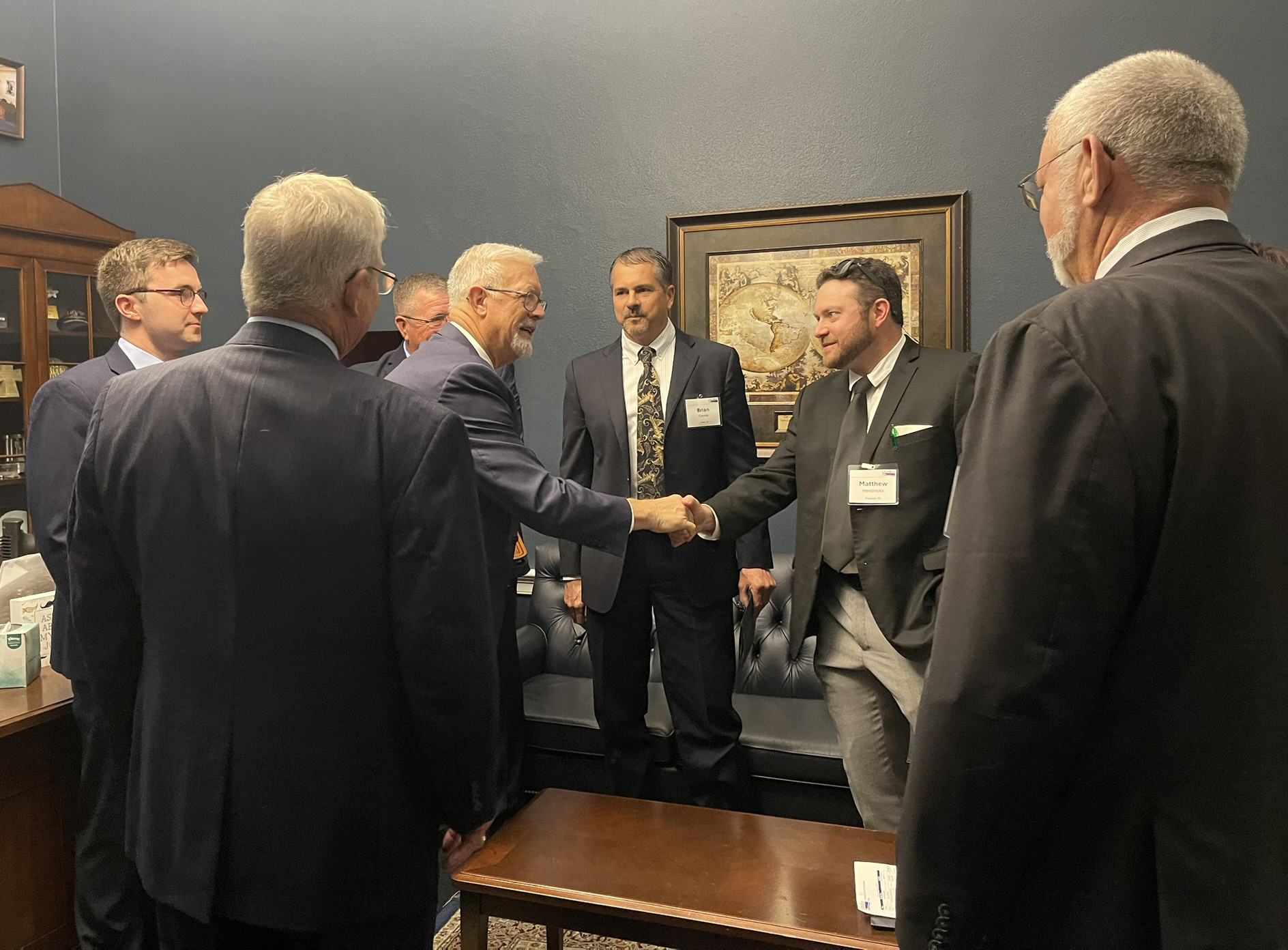 Rep. Randy Weber welcomes Matt Hendricks and the Texas rice delegation to his office during the 2024 November Fly-In
Rep. Randy Weber welcomes Matt Hendricks and the Texas rice delegation to his office during the 2024 November Fly-In
Jan 10, 2025
By Matt Hendricks
Matt is from Houston, Texas. He is a graduate of Texas A&M and is the Texas rough rice buyer for Riviana Foods.
WASHINGTON, DC – On our previous sessions in the rice producing states, we saw the side of the rice business most of us are somewhat familiar with, namely, planting, harvesting, milling, and research. Our trip to Washington showed us a different but equally important part of the business -- advocacy.
The first day of our DC session began with visits at governmental agencies the rice industry interacts with on a regular basis. We stopped by the U.S. Department of Agriculture (USDA) offices to hear from key members of the Foreign Agricultural Service (FAS), who monitor foreign markets, U.S. exports, and other key trade data around the world; and the National Agriculture Statistics Service (NASS) that is responsible for conducting surveys and publishing reports on all aspects of domestic agriculture. Both FAS and NASS contribute to the World Agricultural Supply and Demand Estimates, or WASDE report, which provides key data used to evaluate the world rice market. It was a pleasure to meet in person those responsible for such reports and information, and to get a glimpse of how those reports come together.
Following our meeting with the government, we had lunch at the USA Rice headquarters in Arlington, Virginia, and met with the USA Rice Staff to learn about their roles and responsibilities, and what their focus is when it comes to advocacy for our industry. We finished our meetings for the day at the Environmental Protection Agency (EPA) offices to hear about current projects and areas of focus that relate to rice production.
We capped off the day at the Anheuser-Busch offices, where we joined other USA
Rice members arriving for the USA Rice Fly-In to sample some of the great Anheuser products made with U.S.-grown rice.
Our trip to Washington was scheduled in coordination with the broader USA Rice Fly-In, wherein rice farmers, millers, and merchants travel to the nation’s capital to advocate for support for the industry from our elected officials. The two most important topics on this Fly-In agenda were getting a new Farm Bill passed, along with passing short-term economic relief for farmers.
We were privileged to have so many USA Rice members in attendance for our graduation ceremony scheduled at the front end of the Fly-In. Each of us new graduates then joined our respective state groups (therefore covering the six major rice-producing states) and set off to the Congressional offices to meet with Senators, Representatives, and their staffs.
Texas was well-represented by Linda and LG Raun, Daniel Berglund, Craig Guthman, Brian Center, Brian Ottis, myself, and our fearless leader/schedule coordinator, USA Rice Senior Manager of Government Affairs Shelby Young. Among others, we visited the offices of Texas Senators Ted Cruz and John Cornyn, as well as Texas Representatives Troy Nehls and Randy Weber. It was an interesting time to be on Capitol Hill, shortly after the November election, as we skirted around the array of furniture in the hallways as outgoing incumbents cleaned out their offices.
We ended the day at the Congressional Duck Stamp reception hosted by Ducks Unlimited, where Rep. GT Thompson (R-PA), chair of the House Agriculture Committee, whose version of the Farm Bill USA Rice is supporting, joined us and spoke out in support of the farmers.
We continued our advocacy efforts for the next couple of days including a meeting with Senator John Boozman (R-AR), ranking member on the Senate Agriculture, Nutrition, and Forestry Committee, to hear an update on what to expect regarding the Farm Bill and farmer economic relief.
This leg of the trip was particularly special because we were privileged to spend so much time with industry members and witness the tireless advocacy work they have been doing for many years on behalf of the rice industry. We got a better picture of the challenge of advancing agricultural issues in Washington with so many competing interests, and especially gained a new appreciation for the USA Rice staff who live and work in Washington, advocating on behalf of the rice industry year-round.
We are grateful to our sponsors, ACC, John Deere, RiceTec, and Supreme Rice, who made this entire program possible, as well as those who hosted us at their farms, mills, homes, and offices over the past two years. And while we’re sad the program is over, we’re happy to have had the experiences we did, and to realize our responsibility to continue working with USA Rice, advocating for the industry, and continuing the legacy of the Rice Leadership Development Program.